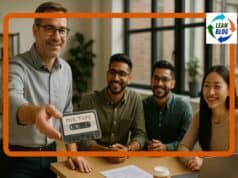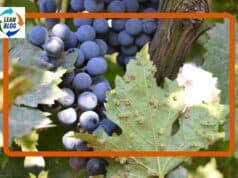I'll get right to it. The word:
“Experiment.”
Well, I also heard “experiments” and “experimenting,” but you get the idea.
As I've blogged about before, my wife and I like taking wine-themed vacations. Look at the bottom of the post for related links if you like reading about this sort of thing.
We recently had an opportunity to visit wineries in Spain in France. We spent three days visiting wineries — they call them “bodegas” — in the Rioja region in Spain. Then, we visited wineries — they are called “chateau” or “chateaux” in the plural — in the Bordeaux region.
The cover image for this post is from France. Below is part of a panoramic shot from Spain:
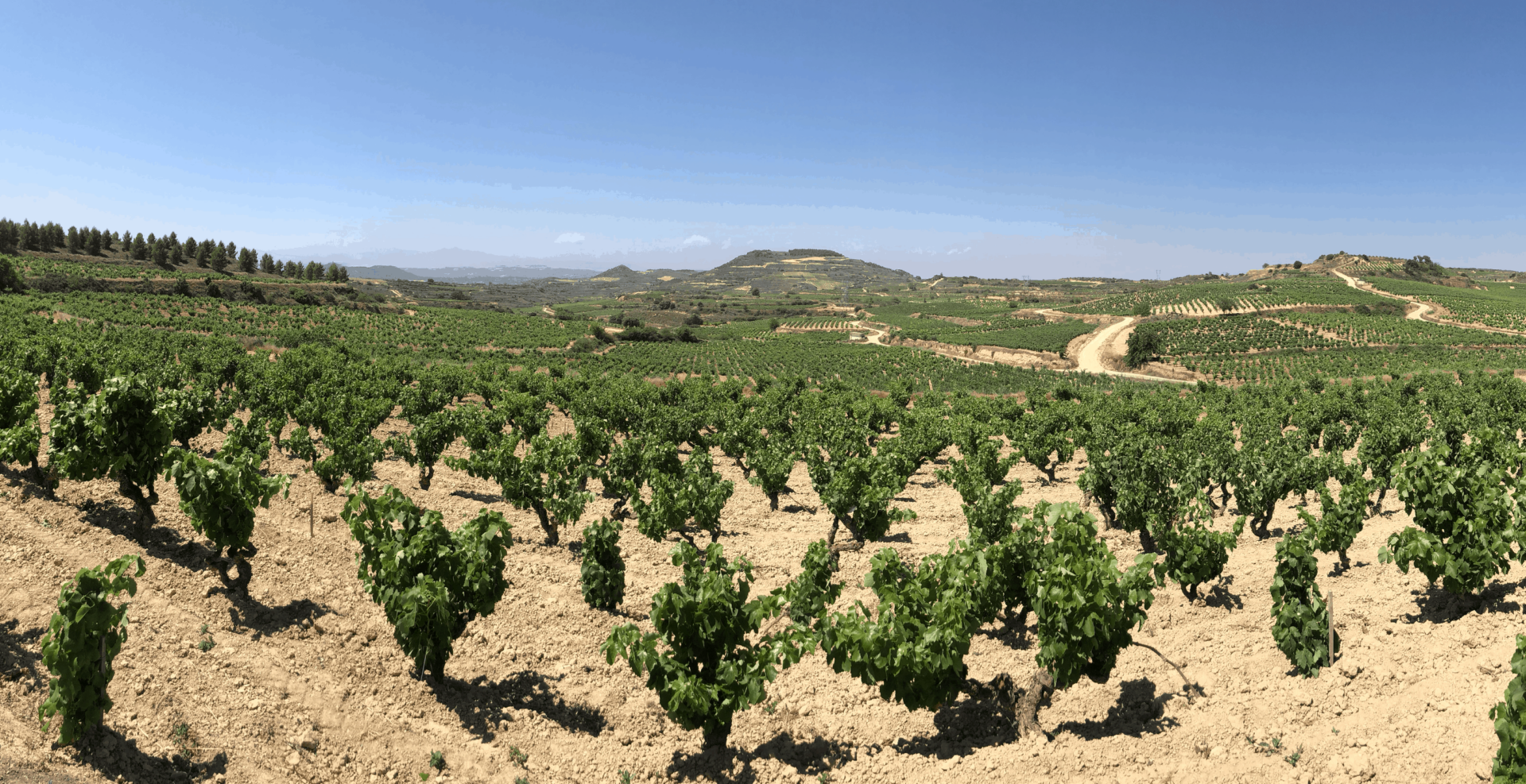
It wasn't every single winery, but I stopped being surprised when one of our hosts or guides talked about “experiments.” Sometimes it was the owner and/or winemaker and sometimes it was employee telling this story.
It's impressive and encouraging to hear about a spirit of innovation and, better yet, a culture of experimenting in wineries with long histories, sometimes centuries long.
Some of these wineries have stellar, if not world-class, reputations. So, between history and reputation, one might expect them to say, “We are great. We have this all figured out. People love our wine. We get fantastic ratings. Why should we improve?”
Yet, they are driven to improve. One said,
“We never stop learning. We never stop improving.”
7th-generation winery family member
Sometimes, it's intrinsic motivation, with people who are just driven to do better. Other times, they realize they are in a competitive global industry where others are working to improve and they either want to raise their status or, at the least, not fall behind.
There are some boundaries where experimentation or improvement is not allowed, due to the government or winery associations telling wineries what grapes they are allowed to grow or use.
But, there are many other dimensions in which experimentation is possible.
A few examples come to mind.
One winery was using these concrete containers to age wine:

They mentioned that it started as an experiment. They evaluated the experiment and found they got good results. So, they extended and expanded their experiment.
Plan, Do, Study, Adjust, right? They didn't call it that, but that sounds like what they were doing.
This winery did what I would call a “small test of change.”
It's more common and traditional for wineries to age wines that require it (and/or benefit from it) in wooden barrels, as shown below:

Sometimes the barrels are painted red in the middle. Why? Because the wineries know that wine will inevitably spill and stain the barrels when they check the wine's progress by opening up the “bung” in the top of the barrel.
You can see that staining:

You might notice how the bungs in the photo aren't the usual cork. These were a combination of metal and (I think) silicone. It was also an experiment that turned out to be effective for this winemaker.
Here's what the painted barrels look like, if you want to see that countermeasure. And it sort of looks cool:

Don't you dare call that the “waste of inventory.” :-) That wine is changing and getting better over time. I'd call that a very slow value-adding process that we see above.
The barrels always have a logo from their maker printed on the heads. Some wineries use barrels from many different cooperages since that introduces good variation and complexity into the wine.
One winery talked about doing experiments with new barrel makers. As with the winery that experimented with the concrete container, the winery doesn't make a huge, risky change. They so small tests of change with a new barrel maker that might replace others.
One winemaker said:
“What do you really know if you don't do the experiment?”
I think that's a really key point. The implication is that we can have a good idea (or look to copy a “best practice”) but we don't really know if it's a good idea unless we try it. I try to teach that mindset to my clients.
Many companies want certainty and somebody sent me a Dilbert cartoon from this month that drives home that point.
Back to tanks and experiments… the 7th-generation winemaker, she told us about an experiment that she ran with aging in some sort of vessel (maybe it was concrete). Anyway, the experiment didn't go well and something burst (or “exploded” was the word she used). She's young (25 or so) and I think her family realized that not every experiment is going to do well.
“So, now we know.”
They learned from their experiment that didn't go as expected. Plan, Do, Study, Adjust.
She was trying to be innovative, and you can't every bat 100%. Just don't keep repeating the same mistakes!
Another winemaker talked about her grandfather's experiment with doing the initial fermentation (which takes weeks) in concrete containers. The experiment went well, so they got more of them, as shown here:
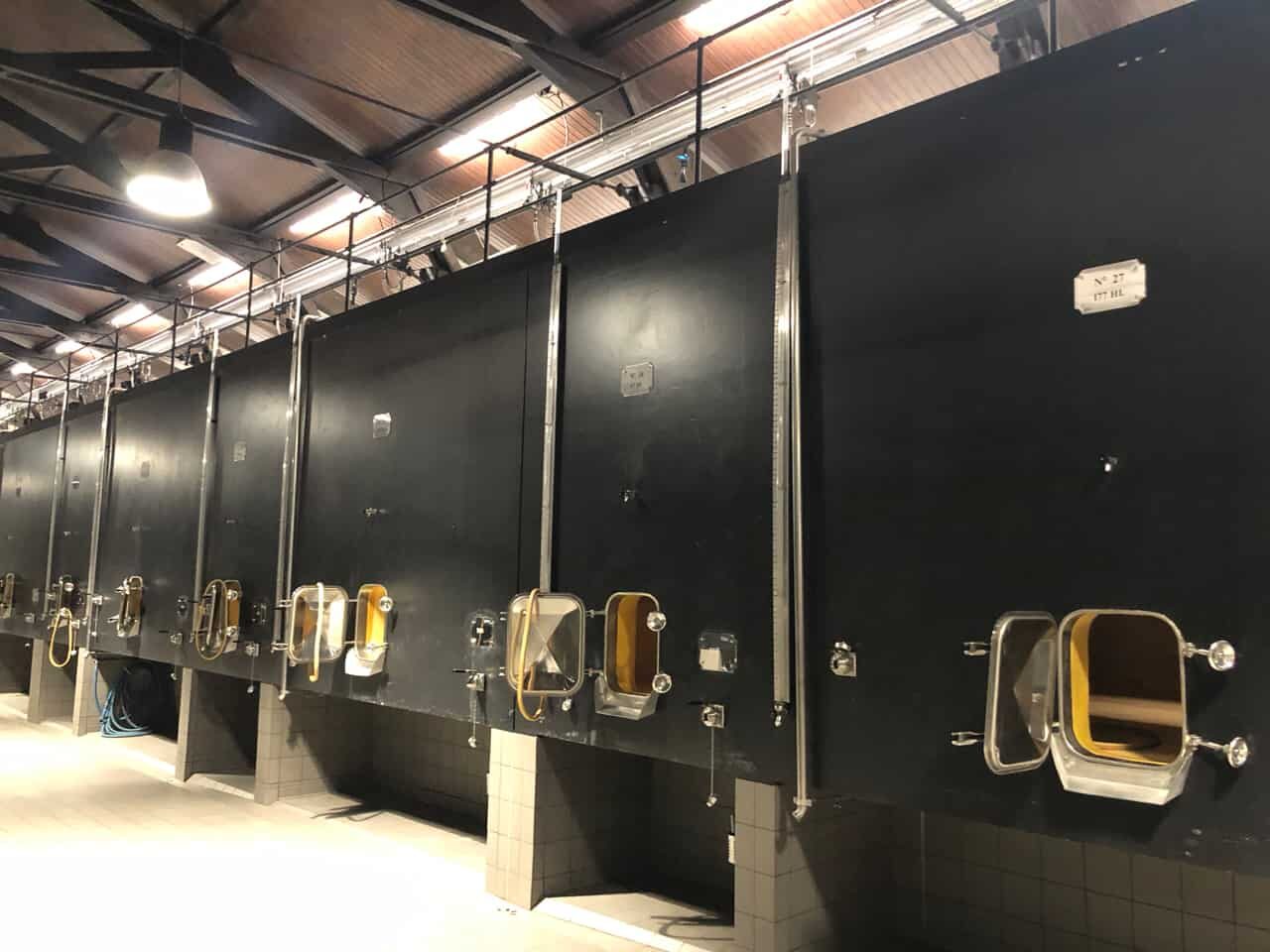
Normally, the initial fermentation takes place in wood tanks or stainless steel tanks. I bet, at one point, using stainless steel was an experiment that somebody ran. Heres a photo from a winery that uses both:
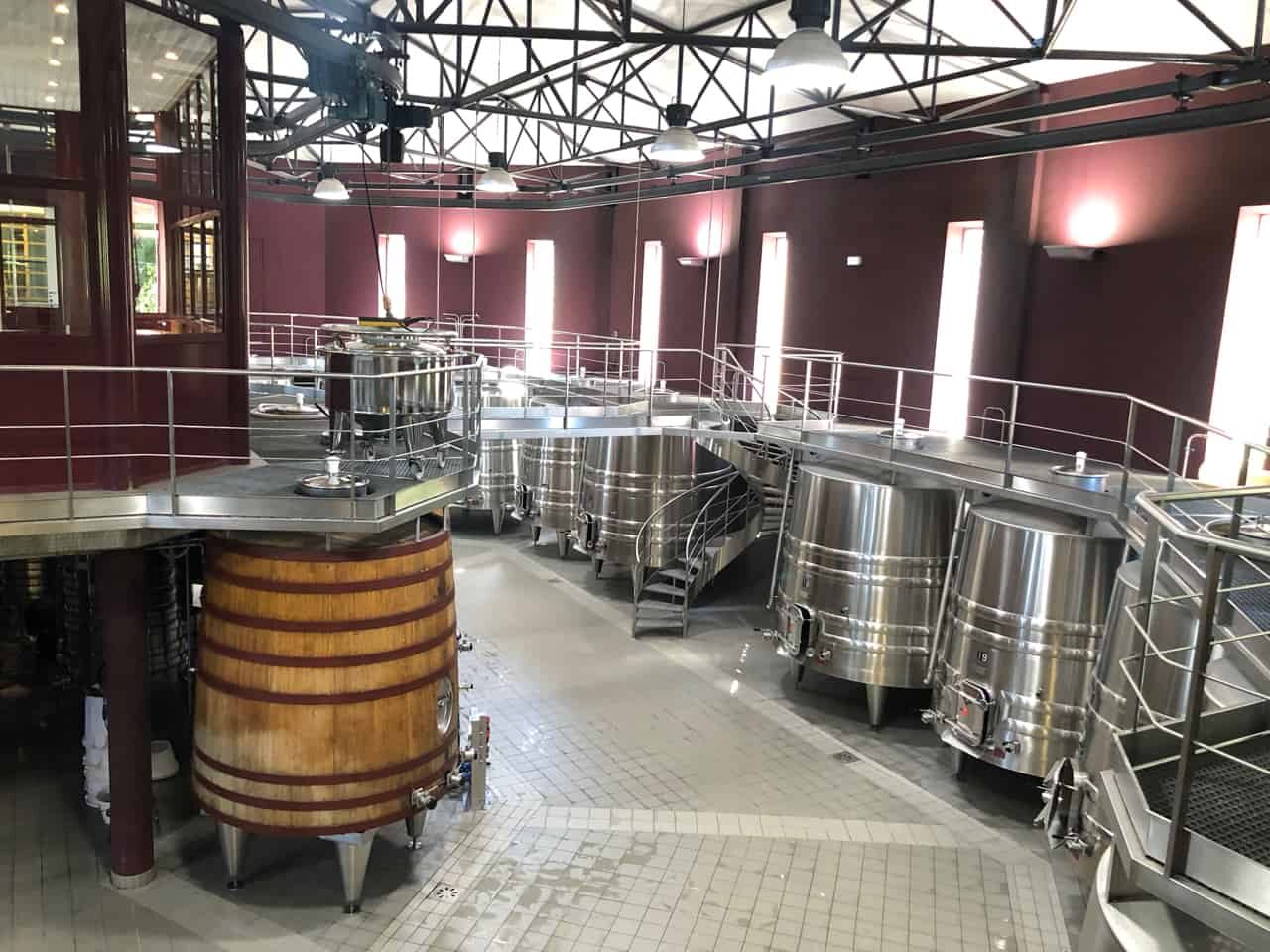
Another winery talked about experiments with using less
Even if you have been doing something for hundreds of years, that doesn't mean you know it all.
Biodynamic Experiments
Another winery told us about their process of converting to be a “biodynamic” winery. This goes beyond being organic and not using pesticides. Being biodynamic also prescribes a number of practices that must be used.
One winery said:
“Going biodynamic requires patience and time to implement.”
That sounds like Lean, right? It can take up to ten years to make the conversion.
One winery showed us, for example, the two donkeys that live in their vineyards:
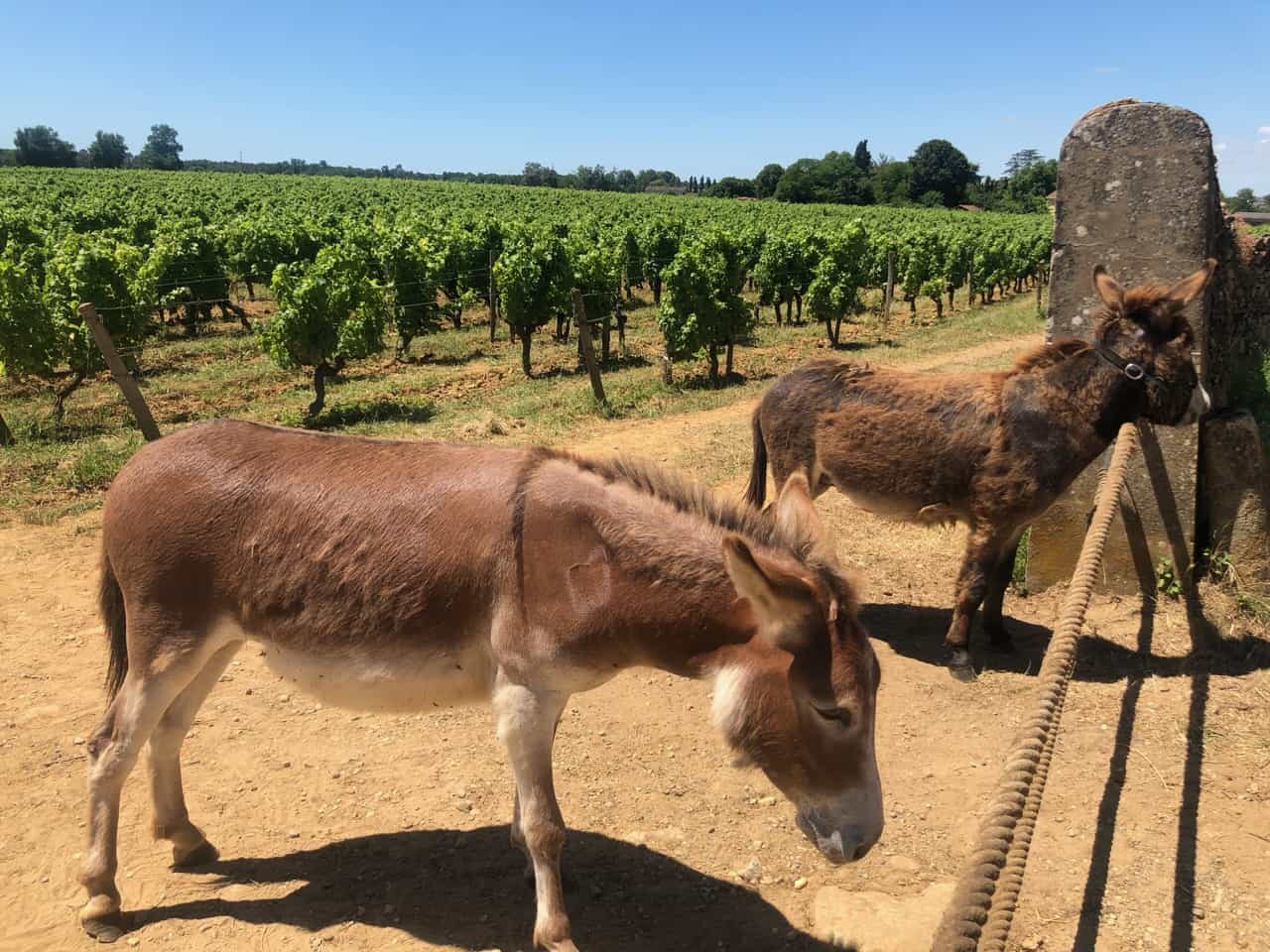
They were friendly. They had been laying around and sunning themselves, but they came over to greet our group of visitors. The guide knew they would come over. They always do. They know the drill. She joked that they really don't do much else… but they're recommended or prescribed by the biodynamic practices and guidelines.
For a winery, starting down that biodynamic path can be viewed as an experiment. Some are “true believers” and are committed to that path because they think it's the right thing to do and the right way to do business. That sounds like some so-called “Lean zealots” you might know?
A different winery was going through that biodynamic transition and they lost something like 80% or 90% of their 2018 crop (which happened at other wineries and might not have been prevented by traditional methods, since I think it was weather/rain related).
Plan, Do, Study…. ack, we had a really bad year.
They didn't give up in biodynamic due to one bad year. In their judgment, the experiment hasn't failed. It's not always cut and dry, right?
One last think about the donkeys. I could imagine a winemaker visiting a biodynamic winery and seeing different methods. There are things you can see with your eyes, like donkeys. They might say,
“We need to get donkeys!”
They might copy one particular practice without understanding the context or the mindset of the broader biodynamic methodology.
This also reminds me of organizations that copy a Lean practice (like huddle boards or andon cords), but they fail because they've copied a piece of a system.
Dr. Deming said, of people who visit Japan and try to copy,
“They don't know what to copy!”
W. Edwards Deming
And so it goes. But I did love our visits. I guess I didn't shut off my work brain, did I?
A Random Photo
You can't make wine without Toyota… or at least a Toyota forklift :-)
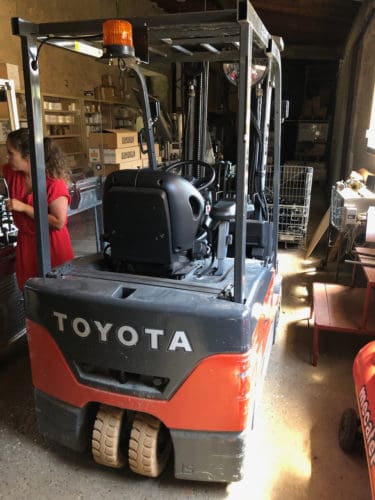
A Random Defect (or Two)
Any process can be prone to defects. Here's a photo of an automated bottling line where two consecutive bottles didn't get their foil “capsule” put in place on top of the bottle:

That was probably NOT the ill effect of some experiment.
My wife once opened a bottle of wine at home where she took the capsule (a.k.a. the foil) off of the top of a bottle and found it was missing its CORK.
Yup. I was there to witness that.
Amazingly, the bottle didn't leak, but the wine was oxidized because of the missing cork and it was undrinkable.
So, think of that chance the next time you buy a bottle of wine!
Related Posts:
Thanks for reading!
Please scroll down (or click) to post a comment. Connect with me on LinkedIn.
Let’s build a culture of continuous improvement and psychological safety—together. If you're a leader aiming for lasting change (not just more projects), I help organizations:
- Engage people at all levels in sustainable improvement
- Shift from fear of mistakes to learning from them
- Apply Lean thinking in practical, people-centered ways
Interested in coaching or a keynote talk? Let’s talk.
Join me for a Lean Healthcare Accelerator Trip to Japan! Learn More





